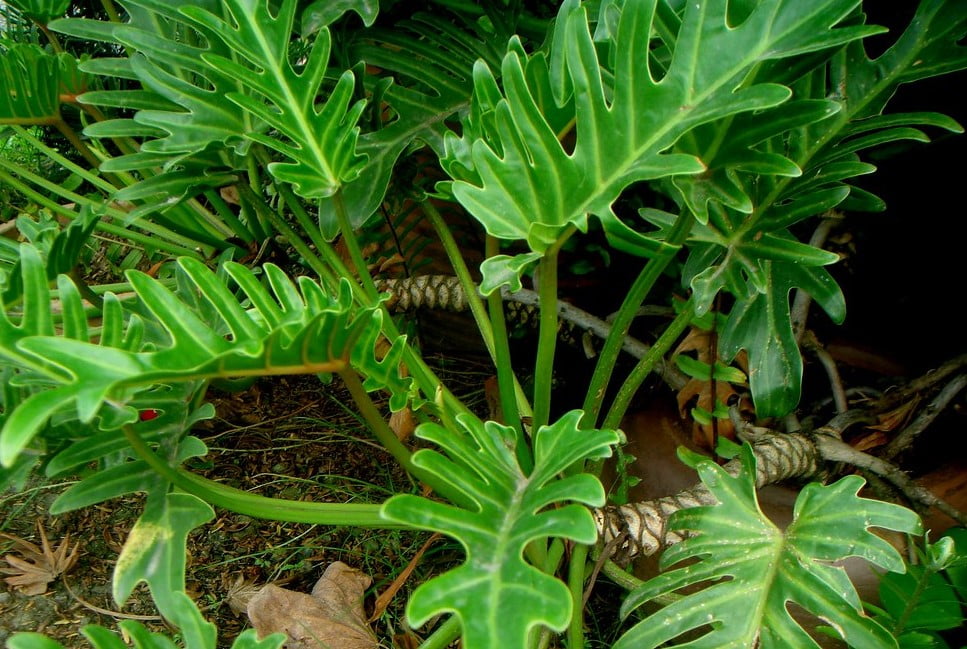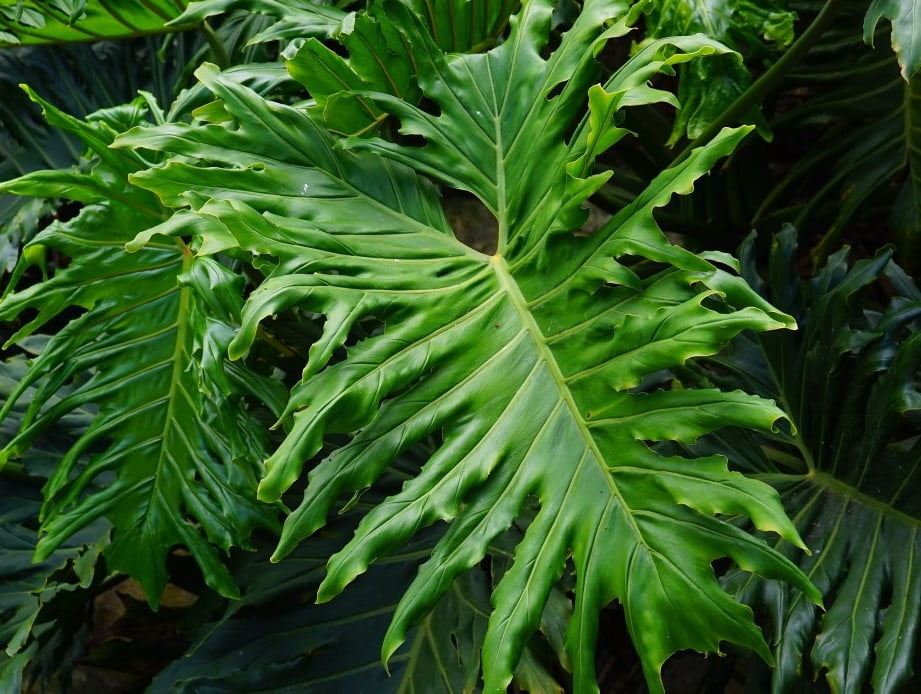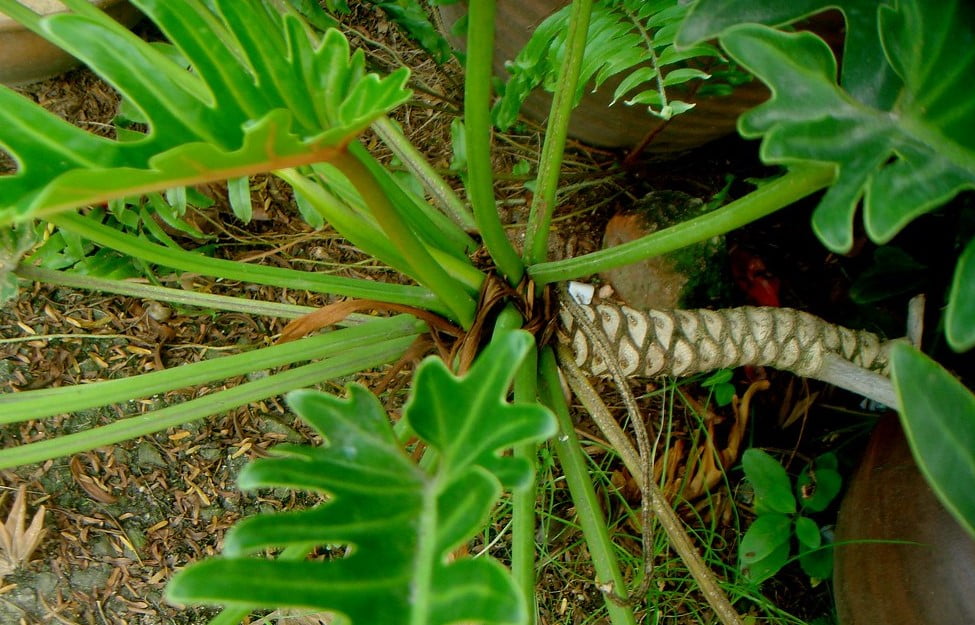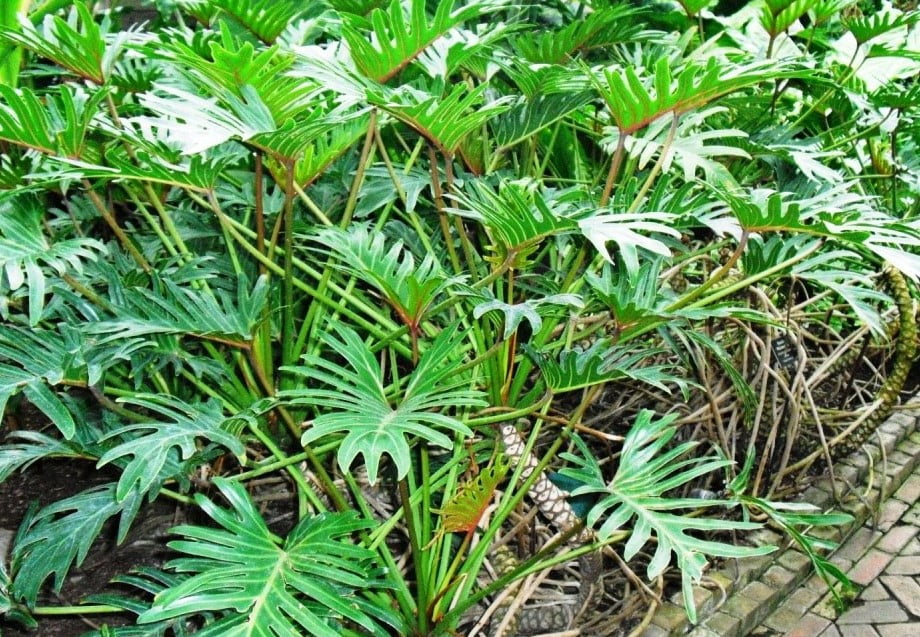The Philodendron Xanadu is a pretty plant with big, green leaves that look like they have fingers. It’s like having a little piece of the jungle in your house! It’s a great plant for people who like plants because it’s not too hard to take care of.
Overview of Philodendron Xanadu
The Philodendron Xanadu is a special kind of plant that comes from Brazil. It’s part of a big family with more than 400 types of Philodendrons, which usually have leaves shaped like hearts and like to climb. But the Xanadu is different because its leaves spread out like a fan and have lots of cuts in them. They grow in a circle shape, standing up and looking very neat.
This gives the plant an almost palm-like appearance, earning it the nickname “Finger Philodendron.” The leaves are a rich green color with a shiny, almost plastic-like texture. Mature plants can grow up to 4 feet tall and wide.
Philodendron Xanadu makes an excellent houseplant for some reasons. It is able to tolerate lower light conditions found indoors. The lush leaves add a tropical feel to any space. And it has an upright, shrub-like growth habit that works well as a floor plant or on tables and shelves. It’s no wonder Xanadu has become so popular!
Growth Habits and Appearance
As a tropical plant native to the rainforests of Brazil, Philodendron Xanadu thrives in warm, humid environments. Indoors, it grows best in medium to bright indirect light. The large, shiny leaves emerge from a central stem in a symmetrical rosette pattern. New leaves start out coppery-red before maturing to dark green.
Xanadu has an upright growth habit, forming a dense shrub-like shape as it matures. It can reach heights of 2-4 feet. The lobed leaves may reach lengths of 12 inches or more. Small white flowers may occasionally emerge from the base of the plant, but they are not the main attraction. This plant is all about the foliage!
You need to provide proper care to keep your Xanadu healthy and looking its best. The key factors include providing the right amounts of light, water, humidity, and fertilizer. Read on to learn more about how to care for this incredible houseplant!
Do you want to Grow Your Best Philodendron Brasil? Please read A Complete Guide here.
Providing the Right Growing Conditions
Light Requirements
The Philodendron Xanadu is a tropical plant from Brazil’s rainforests. It grows well in warm, humid places with filtered light. When grown as a houseplant, it does best in medium to bright indirect light to maintain its full, vibrant appearance.
Too little light will result in sparse, leggy growth as the plant stretches toward any available light source. The stems become elongated and the leaves emerge smaller and farther apart. Variegation and vivid colors in the leaves may also fade or disappear without adequate light.
On the other hand, too much direct sun will scorch and burn the leaves of this shade-loving plant. Direct sun or very bright light causes bleaching – the leaves turn pale yellow or white and lose their healthy green color.
The ideal amount of light for an indoor Xanadu is roughly 8-10 hours of bright indirect sunlight daily. This allows the plant to produce full, lush growth while avoiding sunburn. Put it by a window that faces east or west to get bright light all day without direct afternoon sun.
Supplement with artificial lighting if your home lacks sufficient natural light. LED grow lights can successfully provide extra light. Position the lights to shine on the Xanadu for 8-12 hours per day. Carefully observe the plant’s growth and adjust the lighting as needed. Proper light is crucial for this tropical beauty to thrive as a houseplant.
Watering Needs
Philodendron Xanadu appreciates a thorough watering whenever the top inch or two of soil has dried out. As a tropical plant, it prefers moist (but not soggy) soil. Allowing the soil to completely dry out too frequently can cause leaf browning and drop.
Water until it drains freely from the drainage holes at the bottom of the pot. This ensures the entire root zone is hydrated. For potted Xanadus, take the plant to the sink to water. Allow the excess to drain completely before returning it to the saucer.
Never allow the pot to sit in standing water, as this leads to root rot. Be sure your container has drainage holes to allow excess water to escape.
Check the soil before watering – don’t just water on a schedule. Stick your finger into the top few inches of soil. If it feels dry and crumbly, it’s time to water. If it still feels damp, hold off.
Leaves may droop or curl slightly when thirsty. Pay attention for signs your Xanadu needs a drink. Wilting or limp foliage that perks up after watering indicates under-watering.
Water less frequently in winter when growth slows. Too much moisture during cool months can lead to root rot or fungal issues.
Keep humidity high to reduce water needs. Xanadu appreciates 40-50% humidity or higher. Group plants together, use a humidifier, or place on a pebble tray to boost moisture.
Ensure proper drainage and aeration. Repot in fresh soil annually or as needed to prevent compaction. Add perlite or orchid bark to improve drainage.
Proper watering is key to keeping your Xanadu healthy and vibrant. Stick to a thorough watering schedule based on soil dryness rather than a calendar. And provide plenty of humidity to mimic this tropical plant’s native environment.
Humidity Preferences
As a tropical rainforest plant, Philodendron Xanadu thrives in warm, humid conditions reminiscent of its native Brazil. Humidity levels of 50-70% or higher provide the ideal environment for lush, vibrant growth. The increased moisture in the air reduces stress and keeps its large leaves perky.
In our homes, humidity levels tend to be much lower, averaging 30-50% depending on climate and season. Thankfully, the Xanadu is adaptable and can tolerate these drier conditions. However, lower humidity may lead to slower growth and somewhat smaller leaves over time.
There are several techniques you can use to increase humidity around your Xanadu houseplant:
Group plants together to create a mini greenhouse effect. The transpiration from multiple plants raises local humidity.
Use a humidifier or vaporizer near the Xanadu. Ultrasonic models that produce cool mist work best.
Place the pot on a pebble tray filled with water. As the water evaporates, it humidifies the air.
Mist the leaves every few days with a spray bottle. This boosts moisture temporarily.
Grow the Xanadu in a bathroom. Showers and baths naturally increase ambient humidity.
Aim to keep humidity above 40% if possible. Monitor your plant and make adjustments as needed. Proper humidity encourages lush, vibrant growth in this tropical beauty.
Temperature Needs
As a tropical plant hailing from the lush rainforests of Brazil, the Philodendron Xanadu thrives in warm conditions reminiscent of its native habitat. It prefers daytime temperatures between 65-85°F (18-29°C). Cooler temperatures below 55°F (13°C) can cause damage or stunt growth.
During the day, aim to keep your Xanadu in the warmest, brightest room in your home. The kitchen or family room tends to be ideal, as these spaces receive plenty of natural light from windows and stay warmer than other rooms.
At night, the Xanadu can tolerate slightly cooler temperatures down to around 60°F (15°C). It is fine if the mercury dips a bit lower overnight. However, prolonged exposure to chilly temps below 50°F (10°C) can be detrimental.
If your home gets quite cold in winter, consider moving the Xanadu to a warmer spot or using a portable heater to maintain temperatures above 55°F (13°C). You can also place it above heat vents to take advantage of rising warm air.
During summer, the Xanadu enjoys being moved outdoors to a shady patio or balcony. But be sure to bring it back indoors if temperatures drop below 50°F (10°C) at night. It has no tolerance for frost or freezing weather.
Monitor your plant and watch for signs of temperature stress. Wilting, drooping leaves indicate it is too cold. Leaf scorching or bleaching means it is too hot. Adjust the temperature accordingly to keep your Xanadu happy.
Caring For Your Plant
Fertilizing
Philodendron Xanadu appreciates being fed regularly during the active growing season to maintain lush, vibrant growth. Fertilizer provides the nutrients these fast-growing tropical plants need to produce their large, dramatic leaves.
It’s best to fertilize monthly from early spring through summer when growth is most vigorous. Reduce feeding frequency to every 6-8 weeks in fall and winter when growth naturally slows.
Use a balanced, water-soluble houseplant fertilizer diluted to half strength. Look for a formula marked as 10-10-10, 20-20-20 or similar ratios. Always dilute liquid fertilizers to avoid fertilizer burn.
Apply fertilizer when the soil is moist, never on dry soil. Water the plant first before feeding so the roots can readily absorb nutrients. Pour the diluted fertilizer over the soil until it drains freely from the bottom of the pot.
Avoid getting fertilizer directly on the leaves, as it may cause unsightly spots or damage. Carefully pour it over the soil only.
Rinse the leaves after fertilizing to wash away any accidental splashes using room temperature water. Allow excess water to drain fully from the pot.
Watch for signs of nutrient deficiency like stunted growth, yellowing leaves, or poor flowering. This indicates your Xanadu needs more fertilizer. A monthly feeding schedule provides the fuel these tropical beauties need to thrive indoors.
Repotting
Philodendron Xanadu is a relatively fast-growing plant, so it will need to be repotted every 1-2 years as the roots fill the container. Repotting provides fresh soil and allows the plant to spread its roots and grow to its full potential.
The best time for repotting is in late winter or early spring, before the most active growth period begins. This gives the roots time to establish without the stress of new top growth.
Choose a pot 2-3 inches larger than the current container. Xanadu prefers being slightly pot-bound, so don’t overpot it. Make sure the new container has drainage holes to prevent soggy soil.
Use a rich, well-draining potting mix amended with perlite, orchid bark, or peat moss to create an airy blend. Xanadu thrives in loose, humus-rich soil that retains some moisture while still draining well.
Gently remove the plant and loosen the root ball. Prune any circled or tangled roots. Place some fresh soil in the bottom of the new pot and set the plant inside. Fill around the roots with more soil, firming it down with your hands to remove air pockets.
Water thoroughly after repotting and let any excess drain out. Keep the soil evenly moist for a few weeks to reduce transplant stress. Soon your repotted Xanadu will take off with vigorous new growth!
Repotting is vital to keep your Xanadu healthy and looking its best. Just be sure not to overpot, as too large a container can lead to root rot. With the right soil and timing, repotting is easy.
Pruning
Philodendron Xanadu requires minimal pruning to maintain its lush, full appearance. However, occasional trimming helps keep this plant looking its best.
Prune off any dead, damaged, or diseased foliage as needed. Yellow or brown leaves detract from the plant’s beauty and should be removed. Make clean cuts just above the leaf node using sterilized pruning shears.
You can also prune to control size and shape. If the plant is getting too large or leggy, cut back overgrown stems to encourage bushier regrowth. Remove crossed or congested growth to open up the plant.
Prune in early spring before the main growth period begins. This allows time for new shoots to emerge before summer. Never remove more than 20% of foliage at one time to avoid stressing the plant.
Always sterilize pruning tools before and after use to prevent transmitting diseases. Dip tools in rubbing alcohol or a diluted bleach solution.
Avoid pruning in fall or winter, as cuts won’t heal as quickly and may allow pests or pathogens to enter. Discard all clippings promptly and keep the soil surface clear.
With just occasional, careful pruning, your Xanadu will maintain a full, lush habit and stellar looks. Never prune more than necessary, as this tropical beauty responds best to a mostly hands-off approach.
Pest and Disease Prevention
Philodendron Xanadu is quite resistant to most common houseplant pests and diseases. However, it is still important to routinely inspect plants to catch any potential problems early before they can spread.
Check both sides of the leaves, as well as the stems and soil surface, for any signs of insects. Small brown bumps, sticky residue, or visible bugs indicate an infestation. Common pests to watch for include:
Spider mites – Tiny spider-like pests that cause stippling damage. Knock them off with a strong spray of water.
Mealybugs – Cottony white insects that suck plant juices. Remove manually and use neem oil or insecticidal soap.
Aphids – Pear-shaped, soft-bodied insects that feed on sap. Blast off with water or use horticultural oil sprays.
Thrips – Tiny winged insects that cause silvery scarring on leaves. Apply beneficial nematodes or predatory mites.
Check for signs of fungal or bacterial diseases like leaf spots, blights, and wilting. Improve air circulation and avoid overhead watering. Remove affected leaves promptly.
Prevent problems by providing good growing conditions and not overwatering. Let the soil dry out between waterings. Disinfect tools and pots to avoid spreading diseases. Monitor closely and treat any pests or diseases immediately to keep your Xanadu healthy.
Conclusion
With its dramatically lobed leaves and lush tropical appearance, it’s easy to see why Philodendron Xanadu has become so popular. This eye-catching houseplant brings a touch of the jungle right into your home.
While Xanadu is relatively easy-going, there are some important care tips to know to keep it healthy and looking its best. Be sure to provide warm temperatures, medium to bright indirect light, and consistent humidity. Allow the soil to dry out slightly between waterings and feed monthly during the growing season.
Repot every 1-2 years in fresh, well-draining soil. Prune only when necessary to remove dead growth or overly long stems. Keep a watch for pests and treat any issues promptly.
Follow these simple care guidelines, and your Philodendron Xanadu will flourish indoors. The “Finger Philodendron” makes a fabulous addition to any home or office with its dramatic lobed leaves and lush, spreading habit. Its tropical style brightens any indoor space.
With the right care, this Brazilian native can be enjoyed as a houseplant for many years to come. Don’t be surprised if your Xanadu becomes one of your favorite plants!




